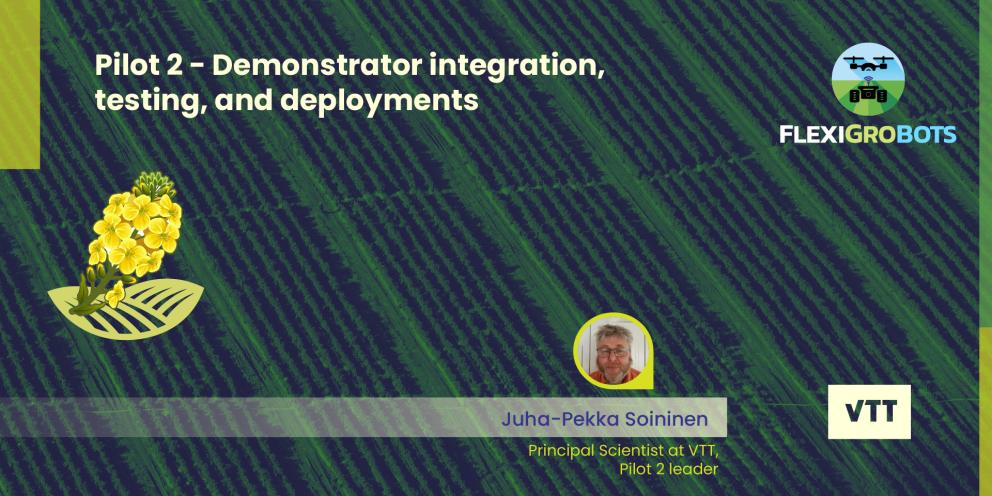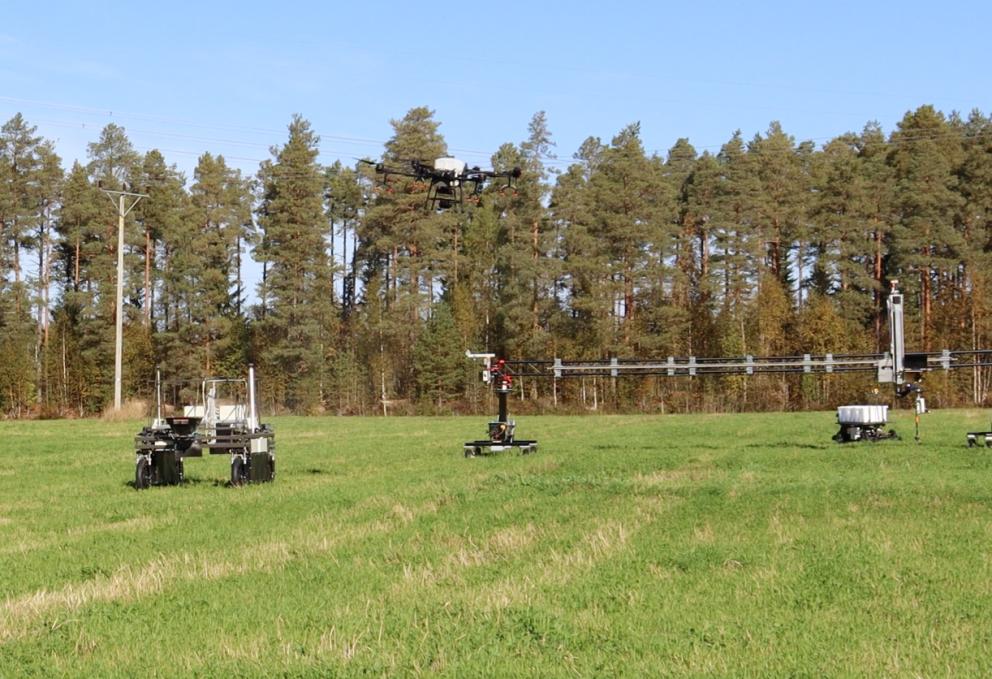Pilot 2 use cases: rapeseed pest management, silage harvesting, and Rumex weeding were designed so that the overall mission workflow consists of multiple phases that can be robot missions, web services such as AI services, and tasks done by the farmer or someone else. In addition to the demonstration of robots or robot fleets, pilot 2 demonstrates the concept of multiple stakeholders collaborating in a common farming workflow using the Robots-as-a-Service or AI-as-a-service business models. We developed a common use case framework for all our three basic use cases that involves four companies: the farm, the drone operator, the ground robot operator, and the AI service provider that together implement the individual use cases using the FlexiGroBots platform services such as an agriculture data space (ADS), a multi-robot mission control centre (MCC), and AI services.
The developed concept requires integration at three different levels: the company and service level, the robot fleet level, and the robot level.
At the company level, we demonstrate the use of an agriculture data space as a tool for exchanging confidential data related to use case tasks between the participating companies and their digital services. Pilot 2 developed two services: the silage harvesting timing and situational awareness of the robot fleet. The ADS was built as a service to FlexiGroBots platform. It is based in the data space components of IDSA. We developed six server infrastructures for all four companies and their service providers that included a Farm Management Information System, IoT solution based on FIWARE, and Internet Data Storage solution. In all those six instances we have IDSA data space connectors, KeyCloack authentication solutions, and a self-developed nodeJS backend software as an interface to company-specific systems and to a REACT-based web application for using the data space.
On the robot fleet level, the objective has been to have a heterogeneous robot fleet that consists of robots of different types and manufacturers. To supervise and coordinate such a fleet, the FlexiGroBots project has developed a Mission Control Centre with Mission Workflow Manager and Fleet Manager tools. Mission Workflow Manager is a web application for the creation of mission workflows and for the creation of a communication network between the robot systems that operate on the field at the same time. The Fleet Manager is a Python application for the monitoring of a robot’s status and for giving commands to individual robots. The communication is based on MQTT and MCC messages defined in the project.
On the robot level, we developed the capabilities to adapt to a given messaging configuration and to send and receive MCC messages to all the robots in pilot 2 and demonstrated the use of the Fleet Manager as a tool to supervise and control a loosely coupled fleet of robots from different vendors.
The main purpose of the robot is naturally to perform its task in the field. Pilot 2 devices and systems have been tested at the Ruukki pilot site. We have focused on 5 robot tasks, but we also considered the possibility of using our robots in other tasks, too. We developed or extended two main robots during the pilot 2. The autonomous tractor was developed for the silage harvesting use case. The tractor itself can be used for various farming tasks, but it was tested with a windrower implement. The weeding robot platform is a general-purpose platform for different field operations. We installed a robot arm with a weeding tool on it and tested the weeding operations. We also integrated three different drones to MCC. A spraying drone was used in the pest management use case. A survey drone was tested and used in all our use cases. A surveillance drone was monitoring the tractor in the silage harvesting use case. There have been also three other ground robot platforms from VTT and LUKE that have been used as development and testing tools for weeding and seeding.
The final demonstrator and preparation for dissemination and exploitation activities are ongoing. We have developed a complex use case scenario on grassland renovation that involves nine autonomous robots operating on the field. Successful test runs have been conducted at the Ruukki pilot site, and we are currently preparing the material that can be published and showcased to the farmers and robot and service developers. That will take place within the next couple of months.


